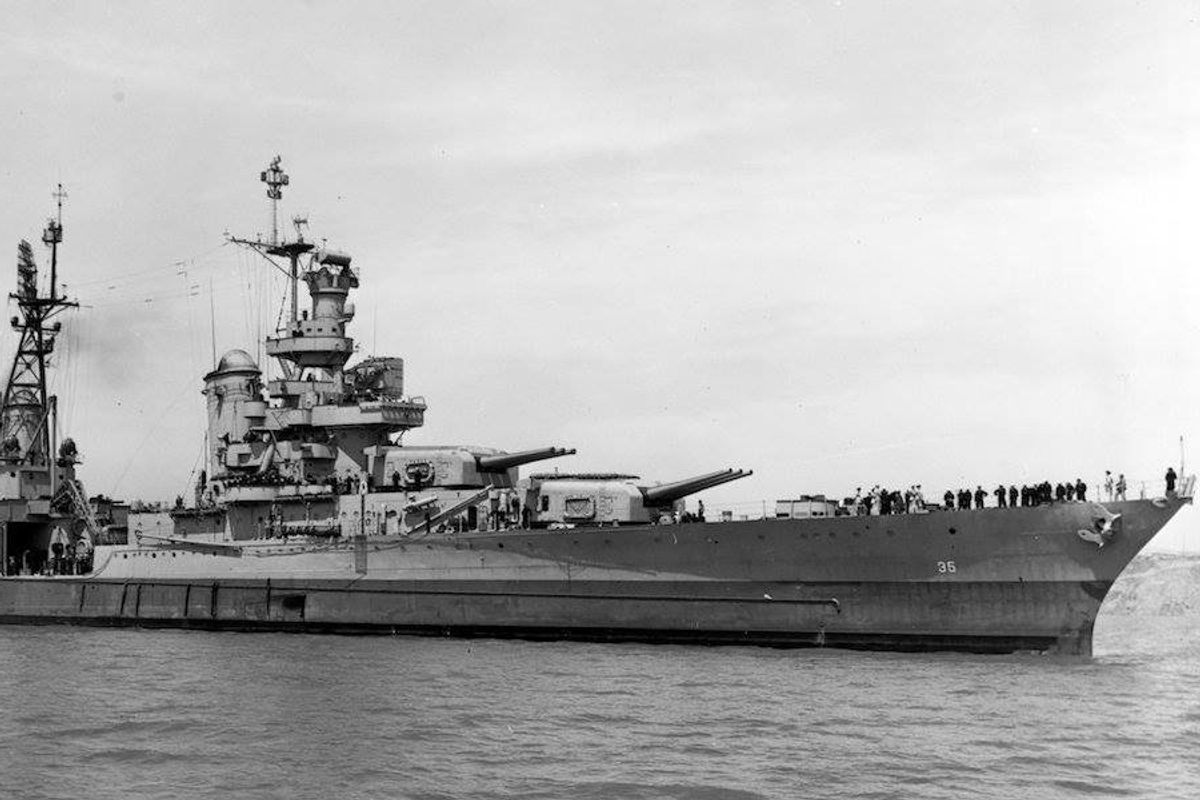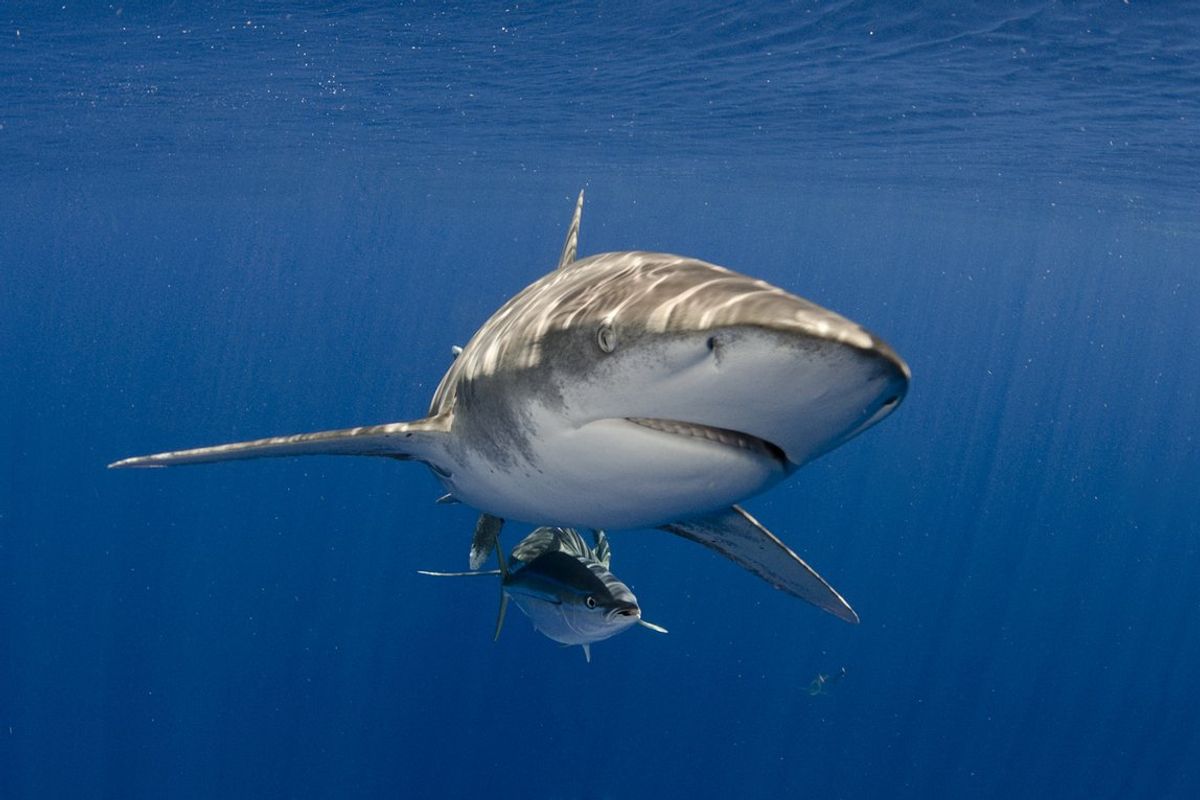Harriet Brewis
Jul 02, 2024
USS Indianapolis - Men of Courage Official Trailer
content.jwplatform.com
Shark attacks are the stuff of nightmares and blockbuster movies but, in reality, they’re very rare.
The worldwide average number of unprovoked attacks on humans currently stands at 69 per year.
And, whilst tragic, this is pretty small fry when you consider more than 40,000 people die annually from gun violence in the US alone.
Nevertheless, there are still infamous instances where sharks have preyed on people in bloody and violent ambushes.
The worst of these to ever be recorded resulted in the death of more than 100 men following the sinking of a US Navy ship during World War II.
In July 1945 the vessel, named the USS Indianapolis, set off for the Philippines from the Pacific island of Tinian where it had been delivering components to make an atomic bomb.
(As a side note, this same atomic bomb, “Little Boy,” would later be dropped on the Japanese city of Hiroshima, claiming the lives of some 140,000 people.)
Shortly after midnight on 30 July, the Indianapolis was torpedoed by a Japanese submarine and, within 12 minutes it had sunk.

Of the 1,195 men on board, around 300 went down with the ship, but nearly 900 were left adrift in the open ocean, as Live Science reports.
Many subsequently died of exposure, dehydration and saltwater poisoning. However, up to 150 sailors and crew succumbed to a more violent fate: they were killed by sharks.
The bodies of the dead and the injured were picked off first, survivor Corporal Edgar Harrell told the Indianapolis Star back in 2014.
"That first morning, we had sharks," he explained, adding: “As men got separated they would be targeted.
"You[‘d] hear a blood-curdling scream. And then the body would go under, and then that life vest popped back up."
The men were too scared to eat or move, for fear of being next on the predators’ list.
According to the testimony of another survivor, one of the sailors opened a can of Spam only to be surrounded by sharks. He soon became the victim of a "feeding frenzy."

"Feeding frenzies typically occur when there is a sudden abundance of food, such as when a large school of fish is trapped in a small area," Nico Booyens, a marine biologist and director of research at the Shark Research Unit in South Africa, told Live Science.
"The scent of blood and the thrashing of prey can trigger a feeding frenzy, causing sharks to swarm and compete for the available food."
Many species of shark may engage in frenzied hunting, during which they can become very aggressive and attack each other as well as the prey, he further noted.
"Feeding frenzies can be dangerous for humans who happen to be in the water, as the sharks may not be able to distinguish between prey and people," he added.
Numerous survivor accounts indicated that many victims were attacked near the surface of the water.
This has led experts to conclude that oceanic whitetip sharks were most likely behind the attacks, since they are a surface-dwelling species.
Although oceanic whitetips are fearsome predators, their meals can be few and far between, so they are often opportunistic feeders.
According to the Florida Museum, the species is often the first at the scene of oceanic disasters. It was also a major cause of fatalities following the sinking of the RMS Nova Scotia in 1942.
The species is known to be persistent, unpredictable and shows little fear, making it particularly dangerous to humans, the same museum notes.

For four days, the Indianapolis’s survivors attempted to stay alive by floating in groups. However, the searing heat meant that many succumbed to dehydration, while others died of hypernatremia (too much sodium in the blood) from being forced to drink seawater.
Meanwhile, although the US Navy had received word that a Japanese submarine had sunk one of its ships, the message was taken as fake – an attempt to lure American rescue boats into a trap.
Fortunately, a Navy plane eventually spotted the Indianapolis survivors while flying overhead.
At last, a seaplane was landed to rescue the remaining men from the water. Of the ship’s original 1,195, only 316 survived.
Naturally, some 70 years after the tragedy, the story was turned into a Hollywood blockbuster starring Nicolas Cage.
Sign up for our free Indy100 weekly newsletter
How to join the indy100's free WhatsApp channel
Have your say in our news democracy. Click the upvote icon at the top of the page to help raise this article through the indy100 rankings
Top 100
The Conversation (0)














